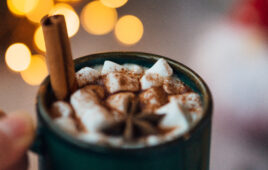During my time at The Country Club (Brookline, Mass.), I championed an innovative approach to repurposing leftover wine from events and our wine-by-the-glass offerings. This initiative created “house-made” vinegars like Chardonnay, Cabernet, and Champagne, occasionally infused with stone fruits, pears, or apples. While this was a creative outlet for our culinary team, it sparked another idea: crafting wine cocktails tailored specifically for our members. This was more than making lemonade out of lemons; it was about reimagining potential.

From refreshing summer iced versions to cozy winter warmers, the flavor profiles of sangria are as varied as they are delightful.
The concept of wine cocktails isn’t new. Its roots trace back to the early 1800s, featuring recipes that blend sweet wine, distilled brandy, and bitters. Wine in cocktails adds complexity and softens the sharp edges of spirits. Beyond the “wine coolers” of the ’80s, I believe in the cyclical nature of fashion trends, and wine cocktails are due for a comeback. The real magic lies in the creativity of mixologists, who have the opportunity to redefine wine cocktails for modern palates, especially now that cocktail crafting is recognized as an art form.
Let’s take the classic punch as an example. The possibilities are endless, providing our beverage team with a canvas to innovate and possibly create a signature club offering. From adding a sparkling wine spritz to exploring tropical flavors, there’s room for a “rainforest punch” or even a “bohemian revival.” The New York Sour, crafted in 1870, showcases the long-standing tradition of wine in cocktails. And then there’s vermouth, a fortified wine staple in countless cocktails, including the beloved martini.
Sangria epitomizes the wine cocktail, adaptable for any season. From refreshing summer iced versions to cozy winter warmers, the flavor profiles are as varied as they are delightful. My go-to for red sangria includes citrus, ginger ale, and distilled brandy. Another favorite—the Hugo—blends elderflower syrup with Prosecco, mint, and seltzer. Originating from Tyrol yet popular across Austria and Switzerland, it is a favorite with members and guests.
For those chillier months, consider traditional warm concoctions like wassail or glühwein, adding a personal twist with unsweetened whipped cream. Presentation is key in elevating these experiences, from custom logo ice cubes to unique garnishes that complement the wine’s flavor profile. Novel presentation techniques, like smoke bubbles, can add an element of surprise and delight.
Glassware, too, plays a pivotal role in the wine cocktail experience. Just as a Mint Julep cup enhances its namesake cocktail, a carefully chosen vessel can elevate a wine cocktail’s allure. Consider introducing “The Buzz,” a honey-based wine cocktail that captures attention on multiple levels. The right garnish, tailored to the wine’s flavor profile, can enhance the overall experience.
In sum, when integrating wine into your cocktails, it’s crucial to consider your audience and the season, ensuring each creation resonates and delights.




